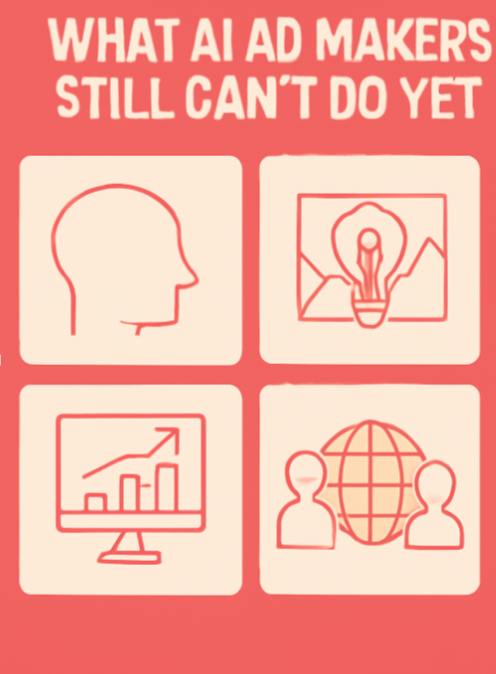How to Evaluate a Programmatic Advertising Platform: Features That Truly Drive ROI
Selecting the Right Programmatic Advertising Platform
Choosing the correct programmatic advertising platform can feel overwhelming, but it’s a game-changer for your campaign’s success. The right platform can seriously boost your ROI.
Identifying Your Campaign Goals
Before you jump in, figure out what you want to achieve. Are you focused on getting your brand out there, generating leads, or making direct sales? Different platforms are better at different things. For example, if you’re all about video advertising, a platform that specializes in video inventory is the way to go.
Evaluating Platform Features
Take a close look at what each platform brings to the table. Does it support the ad formats you need? Think about whether it offers real-time bidding, audience targeting, and detailed reporting. Also, consider if it has features like A/B testing or predictive analytics. These can be super helpful for optimizing your campaigns.
Assessing Data and Analytics Capabilities
Data is king, especially in programmatic advertising. You need a platform that gives you solid data and analytics. Look for features like:
- Real-time reporting dashboards
- Customizable reports
- Attribution modeling
- Audience insights
A good programmatic advertising platform should provide you with the insights you need to make informed decisions and improve your campaign performance. It’s not just about showing you numbers; it’s about helping you understand what those numbers mean.
Considering Integration and Compatibility
Make sure the platform plays nice with your existing systems. Can it connect with your CRM, data management platform (DMP), or other marketing tools? A platform that integrates well reduces headaches and makes your workflow smoother. A well-integrated platform can automate data transfer and boost overall efficiency.
Understanding Programmatic Advertising Benefits
Programmatic advertising offers a bunch of advantages over traditional methods. It’s not just about automating the ad buying process; it’s about making smarter, more effective campaigns. Let’s look at some of the key benefits.
Achieving Precise Audience Targeting
Programmatic advertising lets you target specific audiences based on a ton of data points. Think demographics, interests, browsing behavior, location – you name it. This means your ads are shown to the people most likely to be interested in your product or service. It’s way more efficient than just blasting your message out to everyone and hoping for the best. Plus, if you use managed programmatic services, you can get help with setting up and optimizing your targeting.
Ensuring Cost-Effectiveness
Programmatic advertising can help you get more bang for your buck. By targeting the right people, you reduce wasted ad spend. Real-time bidding (RTB) also helps make sure you’re not overpaying for ad space. You’re only bidding on impressions that are likely to convert. It’s a smarter way to manage your budget.
Gaining Real-Time Measurement and Optimization
One of the coolest things about programmatic is that you can see how your campaigns are performing in real time. You can track impressions, clicks, conversions, and a whole lot more. If something isn’t working, you can make changes on the fly. This real-time optimization helps you maximize your ROI and make sure you’re getting the most out of your ad spend.
Maximizing Transparency and Reach
Programmatic platforms often provide detailed insights into where your ads are being shown and how they’re performing. This transparency helps you refine your strategies and improve results. Plus, programmatic gives you access to a wide range of ad inventory across different platforms, so you can reach a larger audience. It’s about being able to see what’s working and scaling your campaigns effectively.
Programmatic advertising is not a set-it-and-forget-it solution. It requires constant monitoring and optimization to achieve the best results. But with the right tools and strategies, it can be a game-changer for your advertising efforts.
Addressing Programmatic Advertising Challenges
Programmatic advertising isn’t all sunshine and rainbows. There are definitely some hurdles you’ll need to jump over to really make it work. Let’s talk about some of the big ones.
Combating Ad Fraud and Brand Safety Risks
Ad fraud is a huge problem. We’re talking fake impressions, bot clicks, the whole shebang. It’s like throwing money into a black hole. Brand safety is also a concern; you don’t want your ads showing up next to inappropriate content.
- Use fraud detection tools.
- Implement brand safety filters.
- Work with reputable partners.
Overcoming Lack of Transparency
Sometimes, it feels like you’re flying blind. You don’t always know where your ads are showing, how much you’re paying, or if it’s even worth it. The whole process can feel a bit opaque.
It’s important to demand transparency from your programmatic partners. Ask for detailed reports, understand the bidding process, and make sure you know where your money is going.
Improving Attribution and Measurement Accuracy
Figuring out which ads actually led to a sale can be tricky. People see ads on different devices, at different times, and it’s hard to connect all the dots. Without good attribution, you’re just guessing.
- Use multi-touch attribution models.
- Implement tracking pixels correctly.
- Analyze user journeys across devices.
Navigating Platform Complexity
Programmatic advertising can be complicated. There are a lot of platforms, technologies, and data points to wrap your head around. It’s easy to get lost in the weeds.
| Feature | Complexity Level | Importance | Recommendation |
| RTB Bidding | High | High | Invest in training or hire an expert. |
| Data Integration | Medium | High | Ensure compatibility with existing systems. |
| Reporting | Medium | High | Focus on actionable insights, not just data. |
Key Features of a Robust Programmatic Advertising Platform
Programmatic advertising platforms are not all created equal. To really get the most out of your ad spend, you need a platform that’s got the right stuff. It’s not just about flashy interfaces; it’s about the core features that drive results. A robust platform should offer a blend of advanced technology, comprehensive data, and user-friendly tools.
Advanced Targeting Capabilities
Targeting is where the magic happens. You want to reach the right people, not just some people. A good platform will let you get super specific with your audience. We’re talking:
- Demographics: Age, gender, location, income – the basics, but still important.
- Interests: What are they into? What do they search for? What websites do they visit?
- Behavior: How do they interact with ads? What do they buy online?
- Custom Audiences: Upload your own data to target existing customers or create lookalike audiences.
Without these capabilities, you’re basically throwing money at the wall and hoping something sticks.
Comprehensive Reporting and Analytics
Data is king, and you need a platform that gives you the royal treatment. You should be able to track everything, from impressions and clicks to conversions and ROI. The reports should be easy to understand, and you should be able to drill down into the data to see what’s working and what’s not. Look for:
- Real-time dashboards: See how your campaigns are performing right now.
- Customizable reports: Create reports that focus on the metrics that matter most to you.
- Attribution modeling: Understand which ads and channels are driving conversions.
- A/B testing: Test different ad creatives and targeting options to optimize performance.
Without good reporting, you’re flying blind. You need to know where your money is going and what you’re getting in return. It’s the only way to make informed decisions and improve your campaigns over time.
Seamless Integration with Existing Systems
Your programmatic platform shouldn’t live in a silo. It needs to play nice with your other marketing tools, like your CRM, analytics platform, and marketing automation system. Integration can:
- Automate data transfer: No more manual data entry!
- Improve efficiency: Streamline your workflow and save time.
- Enhance targeting: Use data from your CRM to create more targeted audiences.
- Personalize ads: Deliver more relevant ads based on customer data.
Robust Fraud Protection Measures
Ad fraud is a serious problem, and you need a platform that takes it seriously. Look for features like:
- Bot detection: Identify and block fraudulent traffic.
- Brand safety filters: Prevent your ads from appearing on inappropriate websites.
- Viewability verification: Ensure that your ads are actually being seen by real people.
- Transparency: Understand where your ads are running and how your budget is being spent.
Here’s a quick look at the potential impact of ad fraud:
| Metric | Without Fraud Protection | With Fraud Protection | Improvement |
| Impressions | 1,000,000 | 950,000 | 5% |
| Clicks | 10,000 | 9,800 | 2% |
| Conversion Rate | 1% | 1.2% | 20% |
| Cost per Acquisition | $100 | $83.33 | 16.7% |
Optimizing Your Programmatic Advertising Campaigns
Setting Clear Campaign Objectives
Before you even think about touching a programmatic platform, you need to know exactly what you want to achieve. Are you trying to boost brand awareness, drive sales, or generate leads? Each goal requires a different strategy, different metrics, and different ad creatives. Don’t just say you want “more traffic”; define what “more” looks like in numbers and how it translates to actual business results. For example, instead of “increase website traffic,” aim for “increase qualified leads from the website by 15% in Q3.” This clarity will guide your platform selection, targeting, and optimization efforts.
Choosing the Optimal Programmatic Advertising Platform
Not all platforms are created equal. Some specialize in certain ad formats (like video or display), while others excel in specific industries or targeting capabilities. Do your homework. Request demos, compare pricing models, and read reviews. Consider factors like the platform’s user interface, reporting features, and customer support. A platform with advanced targeting options might be great, but if it’s too complex for your team to use effectively, it’s not the right choice. Think about what you need now, but also what you might need in the future as your campaigns evolve.
Continuously Refining Ad Content and Messaging
Your ads aren’t set in stone. Programmatic advertising gives you the power to test and iterate in real-time. A/B test different headlines, images, and calls to action. Monitor performance metrics like click-through rates (CTR) and conversion rates. If an ad isn’t performing well, kill it and try something new. Don’t be afraid to experiment with different messaging styles and creative formats. What resonates with your audience today might not work tomorrow, so stay agile and keep refining your approach.
It’s easy to get caught up in the technical aspects of programmatic advertising, but don’t forget the fundamentals of good advertising. Compelling ad copy, eye-catching visuals, and a clear call to action are still essential for driving results. Make sure your ads are relevant, engaging, and aligned with your target audience’s needs and interests.
Here’s a simple table to illustrate A/B testing results:
| Ad Version | Impressions | Clicks | CTR (%) | Conversions |
| A | 10,000 | 100 | 1.0% | 5 |
| B | 10,000 | 150 | 1.5% | 10 |
In this example, Ad Version B clearly outperforms Ad Version A and should be prioritized.
Measuring Programmatic Advertising Performance
It’s time to see if all that work paid off! Measuring performance is how you know if your programmatic campaigns are actually doing what you want them to do. It’s not just about impressions; it’s about understanding the impact on your business.
Defining Key Performance Indicators
First, you need to figure out what success looks like. What are your KPIs? Are you trying to boost brand awareness, drive sales, or generate leads? Your KPIs will guide what you track and how you optimize. Choosing the right KPIs is the most important step. Here’s a simple table showing some common goals and related KPIs:
| Goal | KPIs |
| Brand Awareness | Reach, Impressions, Frequency, View-Through Rate |
| Lead Generation | Cost Per Lead (CPL), Conversion Rate, Form Submissions |
| Sales | Return on Ad Spend (ROAS), Cost Per Acquisition (CPA), Revenue |
| Website Traffic | Click-Through Rate (CTR), Bounce Rate, Time on Site |
Analyzing Impressions and Clicks
Impressions and clicks are the basic building blocks. They tell you how many people saw your ad and how many clicked on it. But don’t stop there! Look at the quality of those clicks. Are they leading to meaningful engagement? A high number of impressions doesn’t mean much if no one is clicking, and a high CTR doesn’t mean much if people are bouncing off your site immediately.
Tracking User Actions and Conversions
This is where things get interesting. What do users do after they click on your ad? Do they sign up for a newsletter, download a whitepaper, or make a purchase? Tracking these actions gives you a much clearer picture of your campaign’s effectiveness. Conversions are the ultimate goal, but understanding the steps users take along the way can help you optimize your campaigns for better results.
It’s important to remember that programmatic advertising is not a “set it and forget it” kind of thing. You need to constantly monitor your performance, analyze the data, and make adjustments as needed. This might mean tweaking your targeting, refining your ad creative, or reallocating your budget. The key is to be flexible and data-driven.
Frequently Asked Questions
What exactly is programmatic advertising?
Programmatic advertising uses smart computers and software to buy and sell ad space online. Instead of people making deals, machines do it automatically and super fast. This helps businesses show their ads to the right people at the right time, making their advertising money work harder.
Why is programmatic advertising so important for businesses?
It’s a big deal because it makes advertising more efficient and effective. Businesses can reach very specific groups of people, save money by not showing ads to the wrong audience, and see how well their ads are doing in real-time. This means better results for their ad campaigns.
How do I choose the best programmatic advertising platform?
You need to pick a platform that fits what you want to achieve, like selling more stuff or just getting your brand known. Look for one with good tools for finding your audience, clear reports, and ways to stop fake ad clicks. It should also work well with your other marketing tools.
What are the main problems with programmatic advertising?
Even though it’s great, there are some tricky parts. Sometimes, fake ads or bad websites can show up. It can also be hard to see exactly where your money is going, and figuring out what ads led to a sale can be tough. Plus, the technology can be a bit complicated to learn at first.
How can I make my programmatic ad campaigns better?
To make your campaigns work best, set clear goals first. Then, pick a platform that helps you meet those goals. Always keep an eye on your ads and change them if they’re not working well. This means testing different messages and pictures to see what your audience likes.
How do I know if my programmatic advertising is working?
You measure success by looking at things like how many people saw your ad (impressions), how many clicked on it, and if those clicks led to someone buying something or signing up for something. It’s about seeing if your ads are actually getting people to do what you want them to do.






